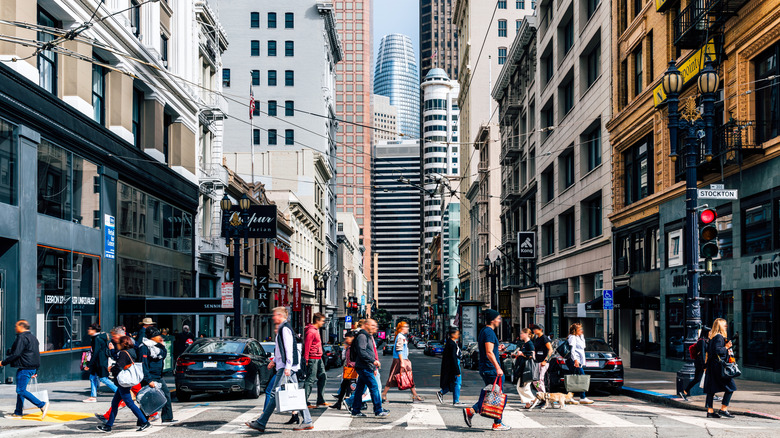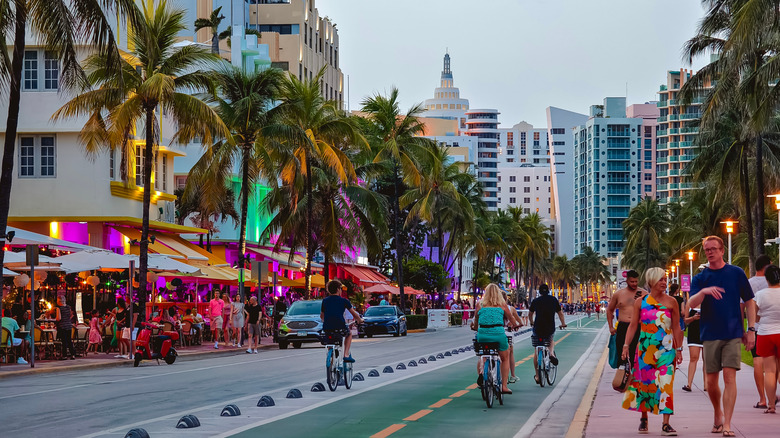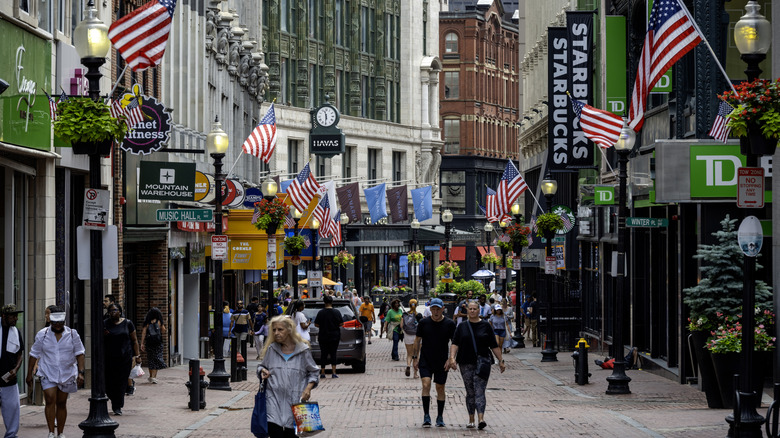These Beautiful Bustling Cities Are Vying For The Title Of America's First Walkable '15-Minute City'
The "15-minute city" is a planning concept that aims to ensure that residents of a particular city have access to all their basic needs and amenities — such as grocery stores, libraries, and doctor's offices – within 15 minutes from their homes on foot or by bicycle. In the past, this was the case for many major towns and cities across the world, but with city planning now often revolving around car use, some areas are practically unlivable without private car ownership. As Brent Toderian, former chief planner of Vancouver, Canada, told Australia's ABC News, "We used to have 15-minute cities as the norm. They were called good neighborhoods — where you didn't have to get into a car for everything."
But city planners have been waking up to the reality that life in many places is car dependent, with many cities across the world now looking to the 15-minute city concept as a blueprint for their futures. They cite less congestion on the roads and improved air quality as just some of the benefits such planning brings. The United States is no different, with major cities like Miami, Boston, and Minneapolis well on their way to fulfilling the 15-minute vision, according to a recent study.
Miami may be America's first 15-minute city
According to a 2024 study conducted by relocation aggregation site MoveBuddha of the nation's largest cities, the U.S. metropolis that is most on its way to becoming a 15-minute city is Miami, Florida. The city known for its beaches and nightlife is also exceptionally walkable and meets many of MoveBuddha's criteria for "commutability, social and physical health, childcare (education), medical health and safety, and home affordability," earning an overall score of 7.83 out of 10, higher than any other city by more than one whole point. Analysis shows why Miami is so successful in terms of having easily accessible services and amenities. Rather than a city with a centralized downtown and rolling suburbs, it's been described as a conglomeration of interconnected villages, with residents of each neighborhood having almost everything they need on their doorstep.
San Francisco, California, with its artsy districts, came in second, though with a much lower score: 6.1 out of 10. Its score was hit by a lack of easily accessible childcare. Pittsburgh, Pennsylvania, came in third, with its score of 5.81 buoyed by its high score in dining, parks, and community, as well as in housing affordability.
Other high performers and the future of the 15-minute city
In fourth place is Boston, Massachusetts, with an overall score of 5.35. Boston's walkability received an impressive rating of 8.5 — higher than Miami's 8 and just trailing San Francisco's 8.9. However, Boston received a worrying 0.4 for childcare, the worst in the top 10. Washington, D.C., came in fifth with a final score of 5.31, while the cities that rounded out the top 10 on the list were Baltimore, Maryland (5.28); Minneapolis, Minnesota (5.24); Long Beach, California (5.02); Oakland, California (5.02); and Cincinnati, Ohio (5.01).
The future of city planning in the U.S. remains up in the air. On the campaign trail for the 2024 presidential election, Donald Trump claimed that his second term would see the building of up to 10 new "Freedom Cities," with abundant homes, manufacturing jobs, transport, and more. However, many on the political right derided the idea for resembling 15-minute cities, which they view as a threat to freedom of movement versus a way to make cities more hospitable. Whether major cities continue to grow in the way they have in previous years or in a new direction remains to be seen.
Looking for more walkable cities to enjoy on vacation? Visit one of the world's most walkable cities in Europe for culture, food, parks, and art.


